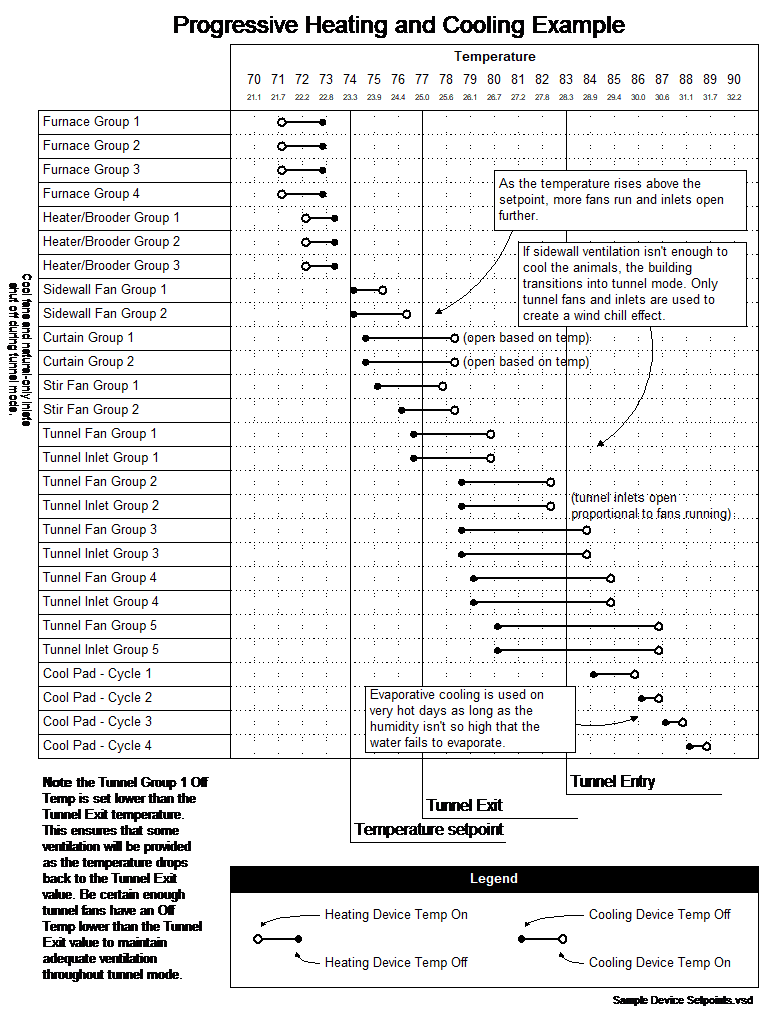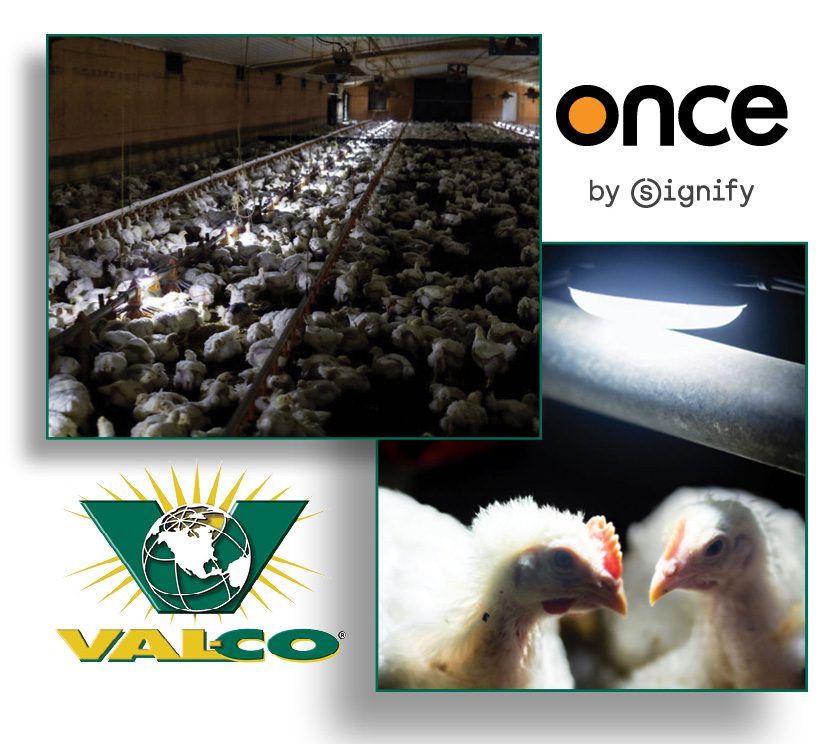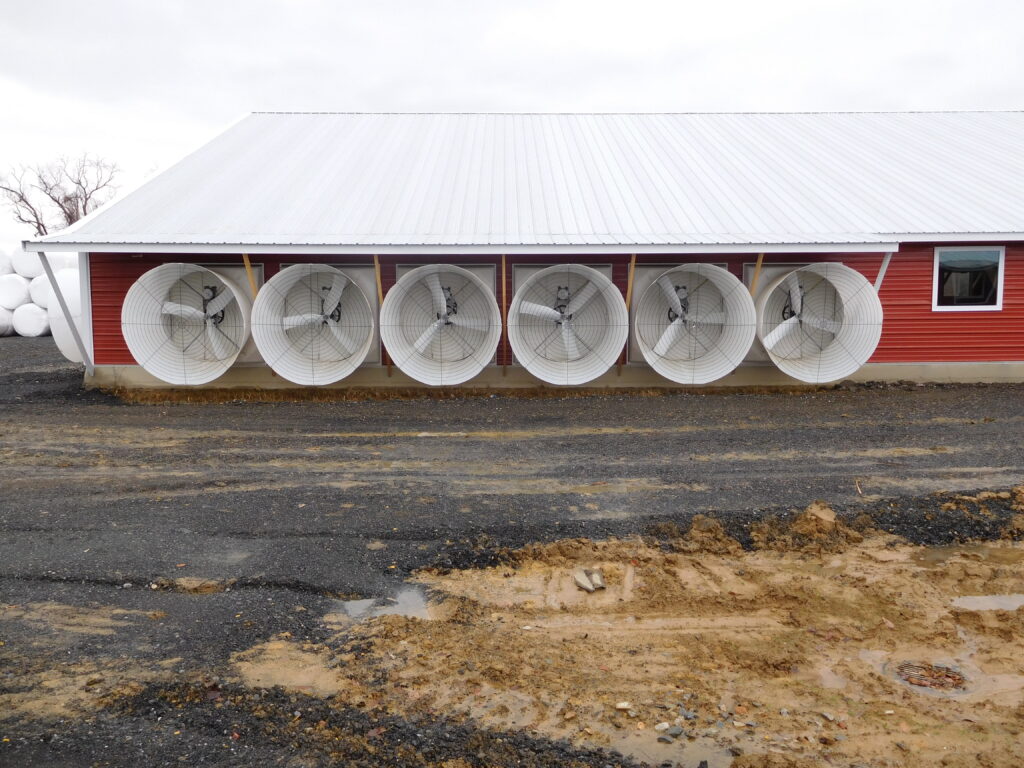Wintertime weather brings its own unique challenges for growers. Cold temperatures force growers to focus on keeping buildings warm while simultaneously maintaining good air quality without breaking the bank with heating costs. For most of the cold weather months ventilation needs are adequately covered by “minimum ventilation” and the first couple stages of cooling.
So why are we discussing tunnel ventilation in February, you may ask. Because our shortest month of the year quickly transitions into March and then April, and with warm spring days occurring sometimes when we least expect it, a potential recipe for disaster can be created.
What is this potential danger that we need to avert? Sometimes in cold weather a grower closes the tunnel curtain/door, and on his ventilation controller turns toggle switches “off” for the tunnel inlet and all the fans used in tunnel mode. This seems to make sense since tunnel mode shouldn’t be needed in February. Especially with larger birds or hogs and an unseasonally warm, sunny day, the temperature in the building may rise until the controller transitions to tunnel mode. Unfortunately, since the only devices being called for have been manually switched off, the tunnel curtain does not open, neither “tunnel” or “cooling” fans run, and minimum ventilation does not operate. Under these circumstances an animal loss is a real possibility.
It is understandable that some tunnel fans will be blocked off, perhaps with winter doors, to improve heating efficiency. That being said, animal welfare and safety have to be our number one priority. Here are a few suggestions to protect your animals:
- Tunnel Inlet – If installing insulation or covering this curtain or door, leave at least a 12” opening available and keep the controller “open” and “close” switches in “auto”.
- Tunnel fans – At minimum, leave the first couple tunnel ventilation stage fans uncovered with shutters installed and the controller switches in “auto”.
- Back-up Thermostats – Thermostats are literally lifesavers when installed properly and set correctly for the age of your animals. Adjust and test back-up thermostats weekly to be sure they are ready to do their job.
- Alarm System with phone dialer – The last line of defense is ensuring that you are alerted when the temperature in the building gets too high. An alarm system should be separate from your ventilation controller and have its own temperature sensor and the ability to call or text (SMS) a group of phone numbers. Test operation, including telephone connection, weekly.
- Foresee the future – OK, that one can be pretty hard, otherwise we would all be stock market millionaires. But what we can do is stop and think about what will happen if the building warms up and enters tunnel ventilation. Will there be enough cooling or will I endanger my animals? Do I need to change the devices I have enabled on my controller? Note the example below and imagine what happens once the room temperature gets above “tunnel entry temperature” and tunnel curtains and tunnel fans are disabled.




